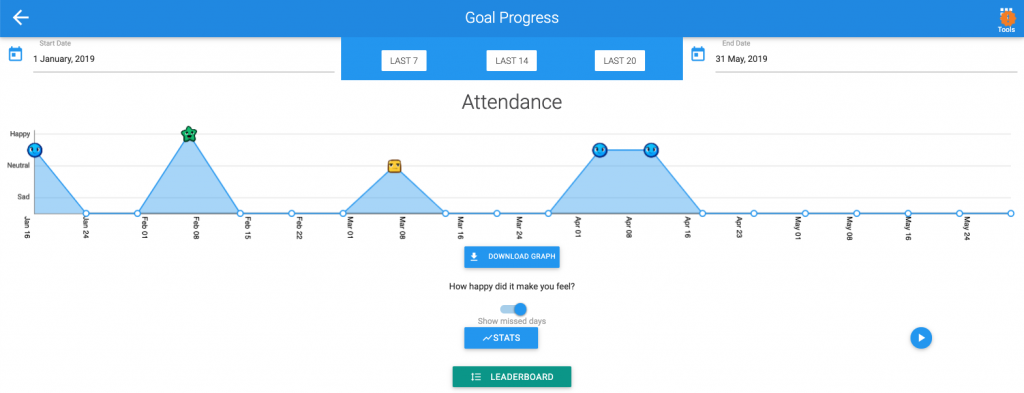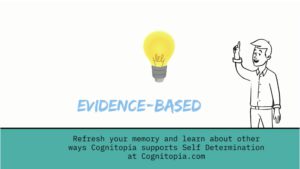Engaging Individuals with Cognitive Disabilities in the Development of Self-Management Tools Through Participatory Design
Co-Authors: Tom Keating and Tobias Rickard
Why Participatory Design?
Cognitopia develops accessible software for people with cognitive disabilities to self-manage everyday activities using web-based tools that foster independence, while also enhancing support received from families, teachers, and adult service providers. In the early 2000’s, when I first began teaching in a community-based transition program, I had the opportunity to work with Cognitopia’s founder, Tom Keating, on the development of Picture PlannerTM, a visual calendaring application. Students and teachers from that transition program played an important role in shaping the development of Picture PlannerTM, and these experiences led us to the inescapable understanding that the entire development process needs to include input from the individuals who will be using the product.
A participatory design approach allows us to develop across ages, cognitive ability, and different life functioning domains so that usability issues are continually addressed to ensure increased independence and ease of use of the technology. Often this means that, consistent with a universal design approach, alternate methods of representation other than text are needed to facilitate accessibility. Through my own years of work with individuals on the autism spectrum, I have witnessed first-hand the power of multimedia content such as video modeling, self-modeled prompting, audio input, graphic controls and other features to enhance information access, self-direction, and personal expression.
How is it Employed at Cognitopia?
Involving people with cognitive disabilities in the design process starts with an understanding that many of these individuals have a difficult time expressing their preferences, articulating their needs, or identifying what design features for a given application would work best for them. This means that obtaining valuable user input needs to go beyond one-off or occasional usability testing and instead employ a more embedded approach to collaborative design.
Working with the Eugene 4J School District, transition-aged students come to Cognitopia’s lab to test software in weekly classroom sessions and iterative design meetings as part of a community-based work experience. Individual student learning styles, communication barriers, and behavior support needs are taken into consideration for each project session, in which students test and provide feedback on the design, functionality, and usability of different software tools. Students work directly with the application designers and programmers, enabling those technical specialists to understand the challenges of user interface and user experience design through the lens of those who experience autism, intellectual disabilities, mental illness, and other cognitive disabilities. Weekly class sessions have five main elements that constitute a typical agenda:
- Check in: Students use Goal Guide to track their attendance goal and we inform the participants of the main focus of the day’s session.
- Design usability testing: Students test selected features using current prototypes or interface mockups and react to competing interface designs.
- Idea discovery: Students are asked to brainstorm new features and share suggestions.
- Next steps and homework: Designers and students prioritize features for development; students get assignments for using applications between meetings.
- Individual work time: We provide time for students to use the software tools to track daily tasks and goals, share accomplishments on their MyLife ePortfolio, or prepare for self-direction of their IEP meeting.
What Are the Benefits?
Developing in this way mitigates the shortcomings of many commercial information technologies, which often neglect individuals with autism and intellectual disabilities because they emphasize text-dominant content and controls, fail to employ universal design, and lack ways to accommodate individual preferences.
Cognitopia’s design approach has provided opportunities over many years for technical developers to understand the context of the student testers’ experiences and to see first hand any accessibility barriers presented by their prototype designs. This shared experience between designers and students minimizes user error and gives students a chance to see the impact of their suggestions and feedback on the final product. More than one student has been known to say, “Hey that’s my feature!,” when they see something they suggested that’s been incorporated into the Cognitopia suite of web-based tools.
In many ways, this approach integrates the design thinking mantra from the technology development world with the mandate for person-centered thinking that characterizes best-practice in disability services. Future information technology design should continue to explore genuine, embedded collaborative development with ongoing direct involvement of students and adults with autism and other cognitive disabilities. Participatory design that involves individuals with neurological differences should be the driving force behind the evolution of accessible self-management technology.
 About Tom Keating
About Tom Keating
Tom Keating, Ph.D. is co-founder and CEO of Cognitopia, home of the Cognitopia Connect platform for life management applications. Keating has been focused for the past 20 years on research and development of self-management and community living applications for individuals with cognitive disabilities including autism, intellectual disabilities, traumatic brain injury, and cognitive decline due to aging.
Tobias Rickard has been an Autism Consultant for the Eugene 4J School District in Eugene Oregon since 2005. Prior to consulting, Toby was a Special Education teacher and received his Masters in Special Education from the University of Oregon, with an emphasis on positive behavior support. Before teaching, Toby was an Employment Specialist in Boulder, Colorado supporting individuals with autism and other exceptionalities with their vocational pursuits. Toby has previously been active in Oregon Council for Exceptional Children, holding various leadership positions within the state unit. Toby is an active member of his disability community as a long-term board member of the local non-profit Supporting Access to Independent Living and as an advisory board member of KindTree Autism Rocks, both located in Eugene. Toby’s areas of interest are in student advocacy, transition, and accessibility. Particularly, the development of student-centered technologies and universal design for learning.




